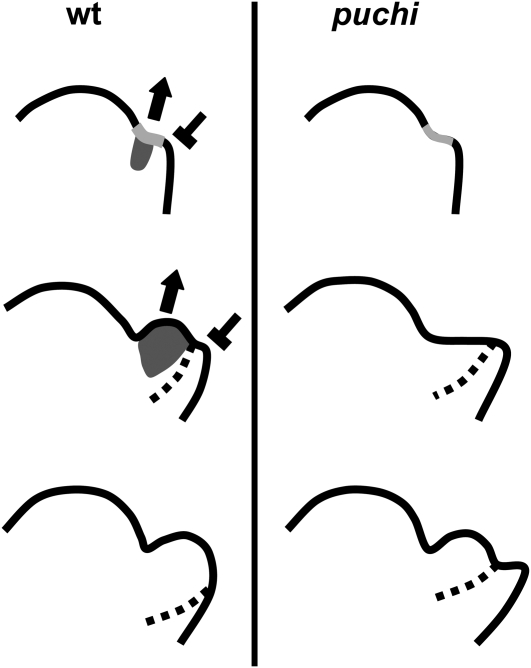Figure 8.
A Model for Control of Morphogenesis by PUCHI in the Early Flower Primordium.
Flower primordium formation in the wild type (left) and puchi (right). The expression domain of PUCHI (dark gray) is deduced from Figures 4A to 4C. Dotted lines represent a putative boundary between the floral meristem proper and the cryptic bract, deduced from the AP1 expression domain (Figures 7E and 7F). Top: Initial bulging leading to the appearance of a shallow crease (light gray). In the wild type, PUCHI promotes the second bulging of the floral meristem (arrow) and represses the cryptic bract (T bar). Middle: The second bulging occurs from the shallow crease in the wild type primordium (left), whereas puchi forms a shelf-like primordium because the second bulging is delayed (right). Bottom: The bulge completes in the wild type and morphological signs of the cryptic bract disappear. In puchi, the second bulging now occurs and the cryptic bract remains morphologically apparent.

